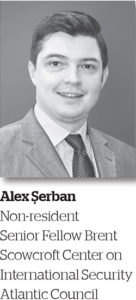 Bucharest’s traffic lanes, utilities infrastructure and overall public management’s design might seem anachronistic to an outsider. Even so, Romania in general and Bucharest in particular have made considerable jumps, adopting and quickly implementing new generation technologies all at once. GSM and broadband internet are some good examples. At the beginning of the 2000s, Bucharest was confronted with a crisis of water supply, registering massive losses. By designing and implementing an ambitious upgrading project, while spending 400 million euros, the city managed to improve water supply’s managed exceeding the expectations.
Bucharest’s traffic lanes, utilities infrastructure and overall public management’s design might seem anachronistic to an outsider. Even so, Romania in general and Bucharest in particular have made considerable jumps, adopting and quickly implementing new generation technologies all at once. GSM and broadband internet are some good examples. At the beginning of the 2000s, Bucharest was confronted with a crisis of water supply, registering massive losses. By designing and implementing an ambitious upgrading project, while spending 400 million euros, the city managed to improve water supply’s managed exceeding the expectations.
In recent years we’ve noticed an emergence of discussions around the sustainable future of urban planning and development, aligned to the new global trends that push for technologized cities – “smart cities”. Promoted at European level since the late 1990s, the discussion has also been adopted by the Romanian Government and public authorities, and Bucharest City Hall has developed the city Master Plan around such discussions.
Fast forward to this week: RADET (the heated water supplier) and ELCEN (water production and distribution) will be transferred to the Municipal Energy Company, a company recently created by the Bucharest City Hall. But the issue lies deeper within these companies: RADET is in insolvency and ELCEN must urgently submit a reorganization plan. Furthermore, the Mayor of Bucharest announced that 2% of the network’s pipes must be replaced urgently (about 70 kilometers out of the more than 3,000 at the moment) and that due to the state of the infrastructure RADET is losing around 1.4 million Gcal per year.
Considering it has a 40-year-old network, how can Bucharest – EU’s 6th largest city – deal with its heating infrastructure while also managing sustainability, growth, pollution and efficiently allocation of resources? First of all, turning around such an infrastructure does not happen in a matter of weeks or months. Neither did it for the water supply where it took the municipality and the water supply company a number of years.
London is a city where district heating became popular after the Second World War, focusing on heating the large residential estates. Using fossil fuels in proportion of around 80% for producing heat, the municipality of London explored with the assistance of the academia, consulting companies and international organizations the possibilities to turn its network into a smart and sustainable one. As such, the Mayor of London issued a “Climate Changed Mitigation and Energy” strategy that focused on decentralized energy: a wide range of technology and scales, from single building schemes using microgeneration technologies to area-wide schemes connected to local power stations and large energy centers serving thousands of customers.
With a fast-evolving technological environment, with urban transformations taking place in a matters of months, a strategic approach to district heating must focus on efficiency, reliability and resiliency. As such, in order to serve the particular needs of its community, in all its forms and shapes, the Municipal Energy Company should take into consideration the role of smaller projects and maximize market competitiveness in this sector. In a modern world, the role of the authority should be on drafting the rules of the game and enabling the communities to choose their own schemes for heating.
Bucharest stands a chance to rise to the challenge posed by it EU status and also to take advantage of the technological jump benefits that could come from efficient policy-making decisions that focus on best practices of smart and sustainable cities.
—————————————-
This article firstly appeared in the printed edition of energynomics.ro Magazine, issued in June 2018.
In order to receive this issue of energynomics.ro Magazine, we encourage you to write us at office [at] energynomics.ro to include you in our distribution list. All previous editions are available HERE.
